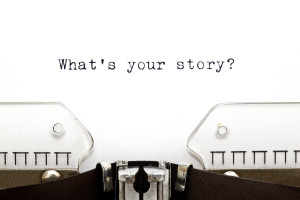Give & Take: What’s the Story?
 Job interviews can be daunting and they can rattle the nerves of even the most thoroughly prepared candidates. Prosekian Kayla Muller recently met with students at The HOPE Program (HOPE) for a workshop on how to successfully nail an interview. Kayla, who has a background in preparing executives for media tours, now supports the Prosek media training team working with clients to sharpen their presentation and media interviewing skills.
Job interviews can be daunting and they can rattle the nerves of even the most thoroughly prepared candidates. Prosekian Kayla Muller recently met with students at The HOPE Program (HOPE) for a workshop on how to successfully nail an interview. Kayla, who has a background in preparing executives for media tours, now supports the Prosek media training team working with clients to sharpen their presentation and media interviewing skills.
“The main hindrance I saw with most of the students was their lack of confidence. As someone who has been in the same shoes and eventually found a way to overcome self-doubt, I wanted to use my new found confidence and presentation skills to help HOPE students achieve the same,” says Kayla.
For many students, a new job can mean a new life of economic independence. HOPE is a nonprofit that serves New Yorkers living in poverty, empowering them to become self-sufficient through career advancement. As part of the recent workshop, students learned how storytelling can help them stand out and land the job.
However, storytelling can be a powerful weapon even after you’ve gotten the job. A great story can make your work more compelling and can even advance your career. According to research by Paul Zak, author of “The Moral Molecule: How Trust Works”, listening to a story releases Oxycontin which signals safety to the brain and helps build trust. It also keeps listeners engaged and makes it more likely they’ll mimic the behaviors of characters in the story. Think about how impactful your presentations could be and how easily you could connect with your audience.
Storytelling doesn’t have to be difficult. In fact, it can be quite simple. Columbia University Professor Jane Praeger has outlined three steps to telling a great story. First, start in the action. Most people spend too much time on the backstory, losing the audience’s interest. Once you’ve got them hooked, show before and after. Build your story to showcase how the characters and situations changed leading to a concrete outcome. Finally, present the “moral” of the story. Define clearly what the story meant and why it’s important.
So next time your palms feel sweaty just at the thought of an interview or a meeting, weave your presentation into a story. You’ll feel more confident and your audience will be more engaged. ![]()
